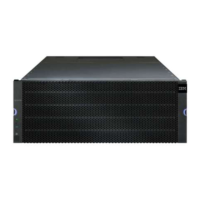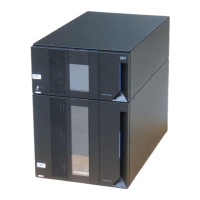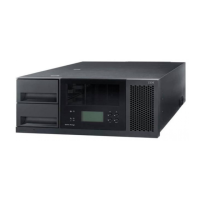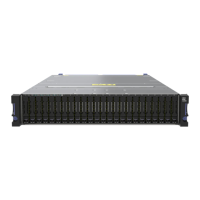Table 2-2. Object Types and Identifiers (continued)
Object Type Identifier
subsystem subsystem number or user label
Note: A user label can have the following
characters: alphanumeric characters, a hyphen, a
pound sign, and an underscore character.
disk pool User label
Note: A user label can have the following
characters: alphanumeric characters, a hyphen, a
pound sign, and an underscore.
A user-defined entry (such as a user label) is called a variable. In the syntax, it is shown in italic (such as
enclosureD or subsystemName).
Statement data is in the form of:
v Parameter=value (such as raidLevel=5)
v Parameter-name (such as batteryInstallDate)
v Operation-name (such as redundancyCheck)
Script Command Synopsis
Because you can use the script commands to define and manage the different aspects of a storage
subsystem (such as host topology, disk drive configuration, controller configuration, logical drive
definitions, and subsystem definitions), the actual number of commands is extensive. The commands,
however, fall into general categories that are reused when you apply the commands to the different
aspects of a storage subsystem. The general form of the script commands and provides a definition of
each command are listed in the following table:
Table 2-3. General Form of the Script Commands
Syntax Description
activate object {statement-data}
Sets up the environment so that an
operation can take place or performs the
operation if the environment is already
set up correctly.
autoConfigure storageSubsystem
{statement-data}
Automatically creates a configuration that
is based on the parameters that are
specified in the command.
check object {statement-data}
Starts an operation to report on errors in
the object, which is a synchronous
operation.
clear object {statement-data}
Discards the contents of some attribute of
an object. This operation is destructive
and cannot be reversed.
create object {statement-data}
Creates an object of the specified type.
deactivate object
{statement-data}
Removes the environment for an
operation.
delete object
Deletes a previously created object.
diagnose object {statement-data}
Runs a test and shows the results.
disable object {statement-data}
Prevents a feature from operating.
Chapter 2. About the Script Commands 2-3

